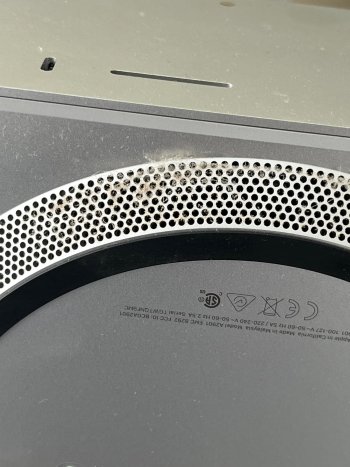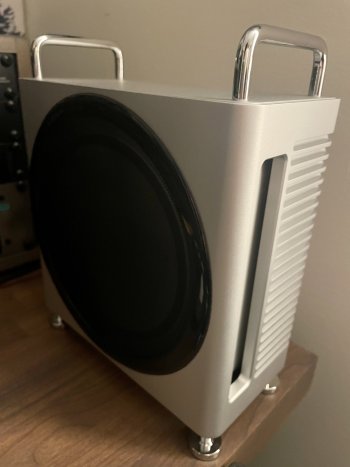Finally, instead of the foam, I went for the Spigen and also ordered 20DEN stockings following the advice of the youtube video that was posted in the thread. I don't like at all the idea of putting the Mac inside a stocking as shown in the video, but I thought that if I cut a square piece and put it between the Spigen and the Mac Studio, it would do the same effect in an aesthetic way. Anyway, I'll check the thermal measurements. If it raises the temperature, maybe I'll run the Spigen plain with no addons.
After some tests, my final decision is to use the Spigen without any extra filter on it.
Reasoning:
Disclaimer: note that these measurements depend a lot on the temperature of your room. In fact I was able to increase or decrease the fans speed by closing or opening the room door.
I made measurements in my new M4 Max (with the open source stats app). It seems the Mac Studio M4 Max is designed to keep the CPU temperature below 80ºC and the GPU temperature below 70ºC. Running a stress test of CPU performance cores plus GPU cores in the stats app for
40 minutes and without any filter nor Spigen, just the plain Mac Studio, the CPU temperature stabilized at about 77ºC, the GPU at about 67ºC, and the fans at about 1150 RPM.
Then, keeping the CPU+GPU stress test running, I added the Spigen with an extra filter of 20 DEN stockings (a single layer of nylon, the greatest square I could cut from a stocking, which is a few millimetres smaller than the diameter of the Spigen, but you can extend it to fit, and the nice thing of the Spigen is that you can put that layer between the Spigen and the filter, clamping and fixing it). This test, to my taste, didn't work well: after
less than 10 minutes, the CPU temperature raised to 82ºC (5ºC higher), and the GPU to 72ºC (also 5ºC higher) and the fans raised to 1490 RPM (340 RPM more).
I didn't like that increase of 340 RPM, and I didn't like that MacOS couldn't keep the CPU and GPU temperatures below 80ºC and 70ºC respectively, so I cancelled the test in the first 10 minutes.
Next, I repeated the same full stress CPU+GPU test (note: I say "full stress" but it's only the performance cores, not the efficiency cores, but I don't think they would change the results substantially) with the
Spigen only (no stockings), and to my satisfaction,
after 40 minutes, the temperatures were identical to the first test with just the plain Mac Studio (77ºC and 67ºC), so the extra 5ºC in the cancelled test came from the stockings. The fan speed stabilized at 1270 RPM (so the Spigen stresses a bit the fans, by 120 RPM, but doesn't modify the temperatures).
As a conclusion, I think the Spigen with no extra filters is the best solution. I agree the Spigen holes are too big for effectively filtering dust, but by adding a effective filter you are stressing the fans. The Spigen holes, even if they are big, it's worth of mention that you actually have the holes of the Mac Studio, so these two grills which are in contact, I believe will have a good effect in reducing the accumulation of dust inside the machine, so I think it will take more time to notice performance degradation due to dust if you use a Spigen, and I believe it's beneficial. But, as
@splifingate said, it's too early to have good reviews on the impact of using a Spigen.
Another extra conclusion, it's the first Studio I buy, and I'm overly satisfied with its thermals: 77ºC and 67ºC with totally silent fans after 40 minutes of full stress running is a great feat. I cannot say the same about Apple totally ignoring the dust ingestion (or maybe not ignoring but using it to their income benefit): that's a FAIL, Apple.






